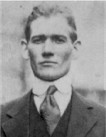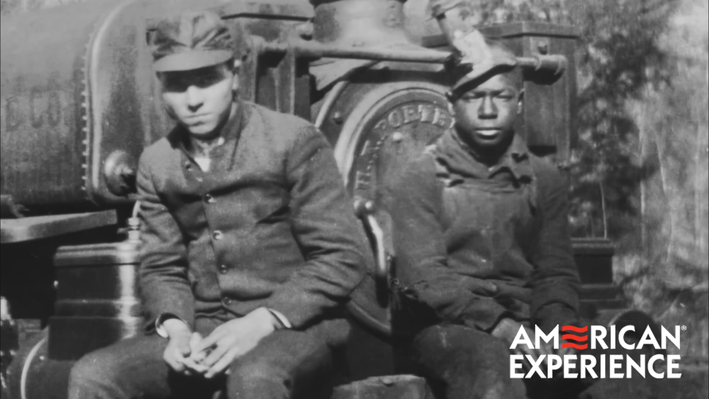West Virginia
Related: About this forumWest Virginia Labor, Worker Unity: The Mine Wars, 100 Years Ago
Last edited Sun Mar 4, 2018, 07:43 PM - Edit history (1)
<CLIP> Coal Mining & Workers in WV; Mary Harris "Mother" Jones, labor activist and 'The Miner's Angel,' narrated by author James Greene of the book "The Devil Is Here in These Hills" (2015) used in "The Mine Wars" PBS Program (2017). James Green, noted author, labor activist and Professor of History Emeritus at the Univ. of Mass Boston, d. 2016.
>WATCH FULL PROGRAM: "THE MINE WARS," PBS American Experience (2017)
- PBS American Experience Site: "The Mine Wars" & Related Topics
http://www.pbs.org/wgbh/americanexperience/films/theminewars/
- "West Virginia's Coal Miners March on Public Television," Counterpunch, Jan. 20, 2016
https://www.counterpunch.org/2016/01/20/the-mine-wars-west-virginias-coal-miners-march-on-public-television/
- WV Mine Wars: Cabin/Paint Creek Strikes 1912-13; Matewan Massacre Sid Hatfield 1920; Battle of Blair Mountain 1921.
https://en.wikipedia.org/wiki/West_Virginia_coal_wars
> The Battle of Blair Mountain 1921, *Largest Labor Uprising in US History*: *Preservation Efforts Today*
https://en.wikipedia.org/wiki/Battle_of_Blair_Mountain
CLIP> 'Unity Speech', "MATEWAN" by John Sayles. Chris Cooper, Mary McDonnell, James Earl Jones, David Strathairn.
- MATEWAN (1987) Movie,
https://en.wikipedia.org/wiki/Matewan
- NEW: *WEST VIRGINIA MINE WARS MUSEUM* located in Matewan, WV, Opened 2015. HAVE A LOOK...
https://www.wvminewars.com/




appalachiablue
(43,584 posts)Fairmont, WV, timeswv.com, "PBS 'Mine Wars' Tells Complex Story," Douglas Inbrogno, Charleston-Gazette Mail, 1/25/16
CHARLESTON — For decades, the history of the West Virginia Mine Wars was forgotten, suppressed and denied on many fronts, including in the very history books taught within the state. Yet the tale of what has been called the largest insurrection in American history since the Civil War, as well as a working-class insurgency of near-epic proportions, is getting a full airing on multiple fronts...The documentary brings the early 20th century history of the conflict into more complete focus, through photos, archival footage (including film unearthed of the aftermath of the Battle of Blair Mountain) and interviews with a raft of historians, miners and others. “Hopefully, this encourages people to investigate the story more and to learn more about it and to think about how it resonates in today’s society,” said Randall MacLowry, the producer/director of the documentary.
Among the historians featured is James Green, who recently published “The Devil Is Here in These Hills: West Virginia’s Coal Miners and Their Battle for Freedom” (Atlantic Monthly Press). The book explores what a New York Times reviewer described as “fundamentally a master-slave relationship” between coal mine owners and miners, where life in company towns was ruled by private police forces and where mine safety “was an afterthought (and) an eight-hour workday was a distant dream.”
Some of the many tales from the Mine Wars initially found expression in the 1980s, first through Lon Savage’s 1985 history, “Thunder in the Mountains: The West Virginia Mine War, 1920-21.” Then came John Sayles 1987 film “Matewan,” inspired by the Battle of Matewan, when on May 19, 1920, a group of Baldwin-Felts detectives arrived to evict striking miners outside the town of Matewan and the pro-union sheriff Sid Hatfield confronted them, along with armed miners. The shootout that resulted left Matewan’s mayor dead, as well as seven detectives and two townsfolk, and inspired many miners to join the struggle for unionization.
The “Matewan Massacre” made Hatfield a folk hero, but on Aug. 1, 1921, a group of mine guards assassinated Hatfield on the steps of the McDowell County courthouse, making him a martyr for the union cause. The national media started reporting on the conflict, depicting the state as an uncivilized, primitive place, as more than 9,000 armed miners massed near Charleston, set to march on Mingo County. Logan County Sheriff Don Chafin and a 3,000-man army of mine guards, deputies and area citizens battled the miners for three days across a 25-mile front, and perhaps 17 or so men were killed, although the exact number has never been determined. Dubbed the Battle of Blair Mountain, federal troops eventually intervened, although not as the liberators hoped for by the miners...


Meanwhile, in Matewan itself, the West Virginia Mine Wars Museum just opened on May 17 and “Blood on the Mountains,” a new documentary by Mari-Lynn Evans and Jordan Freeman also touches on the bloody conflicts of the era.
So “The Mine Wars” documentary comes along at a time when a more detailed account of these events is becoming available, indicative of a significant event in U.S. history that deserves a much wider audience, said MacLowry. “I think the most important thing is that it’s not a story that’s well known.” said MacLowry. “And it’s an important story, a part of American history that more people need to know about.”
The insurrection was initially a huge setback for unionization in the southern coalfields, and membership in the United Mine Workers of America plummeted. It wasn’t until 1933 that U.S. workers were granted the right to organize unions. The law was invalidated two years later by the Supreme Court, but Congress passed the National Labor Relations Act, which strengthened labor’s rights to organize into trade unions and engage in collective bargaining. That same year, West Virginia banned the practice of county sheriffs deputizing armed men, which coal operators used to created the hated private police forces that controlled whole communities...
Mark Samels, executive producer of "American Experience" who got his start at WNPB in Morgantown, said the conflict in the southern coal fields came during the Gilded Age and Industrial Revolution, when the country was changing fast and “the haves are separating themselves from the have-nots.” Con't...
READ MORE: http://www.timeswv.com/news/pbs-mine-wars-tells-complex-story/article_a5d60234-c320-11e5-a4ce-77f91991b5e5.html


